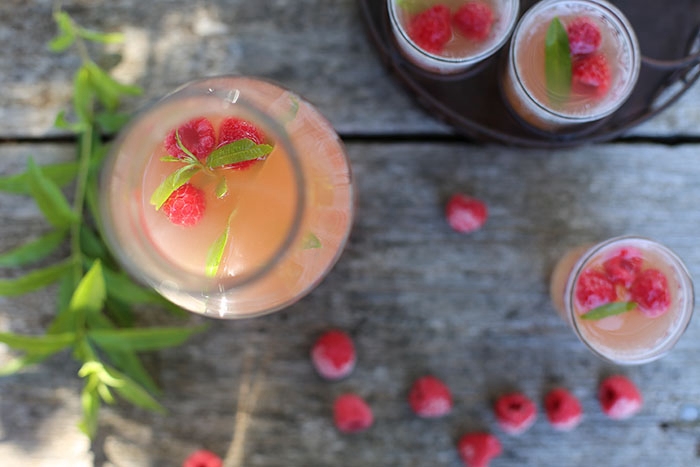Superfood: Kefir
This means they contain healthy microbes that help fight infection, maintain a healthy digestive system and help keep the body free from disease, reducing risk factors of gastroenteritis, some types of cancer (including intestinal) and cardiovascular disease.
Yogurt as a Superfood can also help reduce the risk of allergies and colds and raise the antibody levels, increasing the immune system.
Yogurt is basically made from bacteria that operate in fresh milk, making it thicker and acting as a preservative. These bacteria vary and so do the types of yogurt that result from their actions. You can make your own yogurt at home combining milk with bacteria in a starter culture.
Water kefir, also known as Japanese Crystals are small translucent gel like balls that come from a prickly pear cactus. What are referred to as ‘grains’, are colonies of yeast and bacteria that look like curds, which you strain out of the water after fermentation, then use to start the next batch. The grains grow and multiply in number over time. You can toss the surplus in the compost, or give them away to friends. However you don’t need to eat yogurt in order to get all the benefits of kefir. Find out how to prepare and enjoy your kefir in this delicious and refreshing recipe by Stacey from goodnesis.com.
Water Kefir
Water kefir grains goes through one or for a more flavourful drink - two fermentation stages, the first for 48 hours, then the kefir grains are strained out, leaving you with a mildly fermented water. Bubbles are created, and the kefir grains convert the sugar that you feed them into bacteria that is good for you. For a more flavourful & fermented drink, you can then add whatever fruit you desire to sit for the second ferment for 12 - 24 hours. Once the flavourings are added, a fruity, bubbly, delicious fermented water is created full of probiotics - healthy gut healing “good bacteria”.
During the spring/summer, infuse with fresh strawberries, raspberries, rhubarb, or peaches. Or during autumn, with plums, pears, apples or grapes. It’s simple to make and actually a fun process.
There are two important things to know before starting:
- The basic ratio of sugar to water to kefir grains and starter is important. As below.
- Jars, bottles and all utensils need to be sterilized with hot water and most importantly never touch the kefir grains to metal of any kind - metal can harm your grains. Always use plastic or glass for spoons, sieves and jars.
Water Kefir Raspberry Lemonade- a simple & refreshing probiotic soda.
Serves 4 cups
Equipment:
- 1 liter jar
- Cheese cloth/thin kitchen towel & rubber band
- Plastic/wooden spoon
- 1 plastic strainer
- 1 liter jar with lid
Ingredients for first fermentation:
- 1 liter/4 cups filtered water
- ⅓ cup /55g organic raw cane sugar
- ¼ lemon squeezed lightly, then dropped in
- 1 - 2 (25g) dried fig/prune/sultanas/date
- 3 Tblsp active kefir grains (I bought mine here)
Ingredients for Flavouring/Second fermentation:
- 1 cup fresh raspberries
Preparation for the first fermentation:
Fill your jar with 4 cups filtered water. Add the sugar & lemon (the lemon acidify your culture & enriches its flavour), and stir using a wooden spoon or plastic spatula until the sugar has mostly dissolved. Add in the kefir grains, and then the dried fruit (the dried fruits provides nitrogen for their growth), give a gentle stir and cover with a thin towel or cheesecloth and seal with a rubber band. (You want the kefir grains to be able to breathe & carbon dioxide to exit.)
Let the kefir water sit on your counter for 48 hours/ 2 days - may take less in Summer or more in Winter. After 48 hours your kefir will have fermented slightly and can be sealed, refrigerated & drunk as is, or for a more flavourful drink, a second fermentation; see below.
Second fermentation:
Rinse your whole raspberries and place in clean sterilized 1 liter jar, strain out the kefir grains (set aside) and remove the lemon & dried fruit (the dried fruit can be used up to 2 more times for the next batch), filling the jar to 1 inch from the top. Cover with a plastic/glass lid, and leave to ferment outside for another 12 - 24 hours. Your kefir will start bubbling; at this point it is time to put it in the refrigerator. Once it has chilled, it is ready to serve - open carefully over a sink, as the liquid in the bottle is under pressure, and when you release the bottle's seal, the water kefir may fizz and foam. Strain out the fruit & pour into glasses with a few sprigs of fresh mint, I like to drop a few frozen raspberries or whatever fruit you chose to flavour with in each glass when serving.
The kefir grains that you strained out earlier, should be rinsed with water ready to start again or can be stored in a smaller jar, in the fridge covered with water and 1 - 2 Tablespoons sugar added to it. When refrigerated, you want to feed the grains with sugar & water at least once a week, to keep them healthy and alive. They are happiest when they are actually making water kefir, so in the warmer months I make 1 - 2 jars a week and put them to sleep in the colder months.
